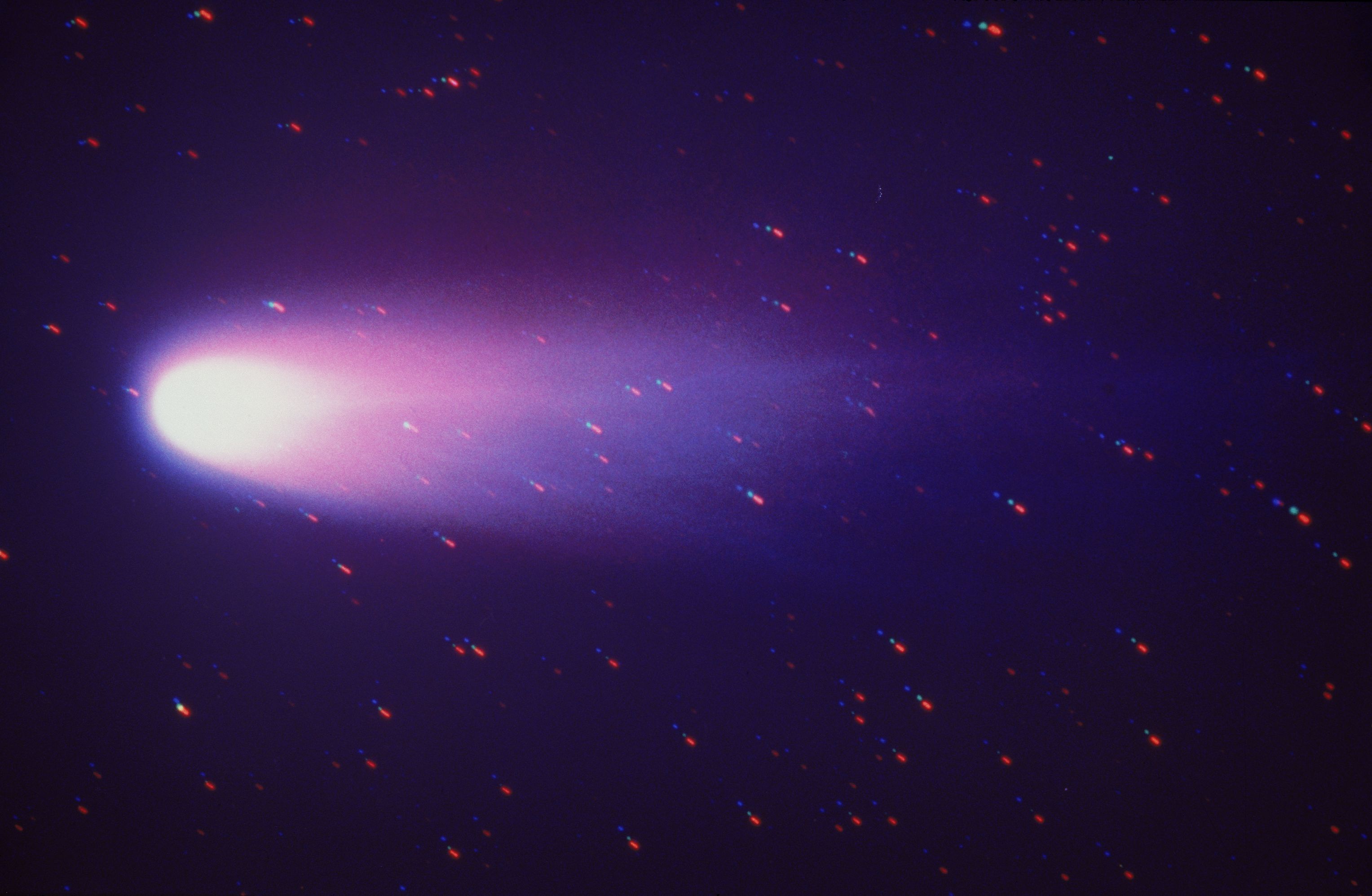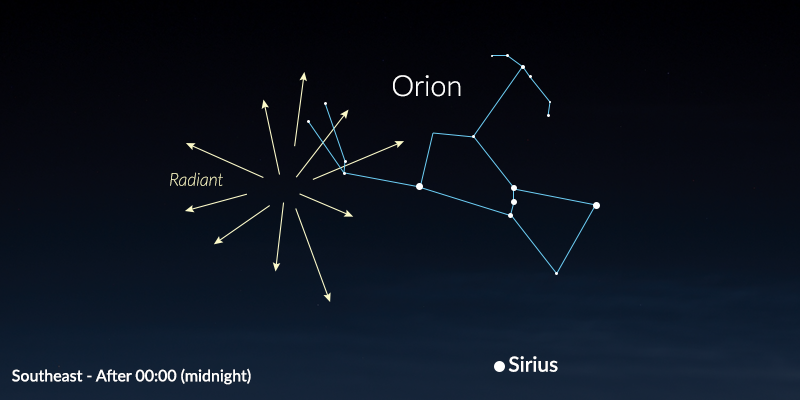The Orionids
The Orionids, like all meteor showers, are named after the constellation in which they appear to come from, which in this case is Orion. Remnants from this shower come from Halley’s Comet, officially designated 1P/Halley. Halley’s Comet is the only known short-period comet that is clearly visible to the naked eye from Earth. This comet swings by the sun every 76 years. Halley last appeared in the inner parts of the Solar System in 1986 and will next appear in mid-2061. The current orbit of Halley’s Comet does not intersect the Earth so the Orionid meteors we see today were left behind by the comet many years ago. Meteoroids (meteors orbiting in space) are subject to perturbations when they pass close to the planets. This makes it difficult to predict just how densely populated the meteoroids are when then intersect the Earth. Therefore it is also difficult to predict just how active the Orionids will be year to year. The latest research believes that the Orionids are in a 12 year cycle with a particle resonance with Jupiter, independent of the much longer orbit of Halley’s Comet. The last cycle peaked in 2006, when Orionid activity matched the normally stronger Perseids. Rates have been low during the first half of the 2010’s so the hope is that activity will be on the increase the next few years. Recent zenith hourly rates have been near 30 in 2017 and 22 (full moon) in 2018. We look for a substantial increase this year!

Where? When? How many?
Orionid rates should be currently near 5 per hour during the last few hours before dawn. This should increase to 15-20 meteors per hours near maximum activity, which occurs on October 22. This outlook is a bit muted due to a 40% illuminated moon which will be present on the night of maximum activity. Unlike most major annual showers, the Orionids have a flat maximum where strong rates occur over several nights centered on October 22. Therefore, if you are clouded out on the morning of October 22, don’t despair as good rates will continue for a few more nights. Good rates can be see equally well before the maximum too, but the moon will be closer to full prior to maximum.
If you watch the same place in the sky all Orionid meteors will have the same characteristics. They will move in parallel paths and will possess the same velocity. These paths will lead back to the radiant in Orion. These characteristics change if you look somewhere else. In general, Orionid meteors will appear to be swift unless you see them near the radiant or near the horizon. Also the paths will appear shorter near the radiant and near the horizon. Therefore it is advisable to have the Orionid radiant near the edge of your field of view so that you will see longer meteors. There are also minor radiants active in Gemini, Leo Minor, and Aries this time of year. These meteors will have various speeds and will produce much less activity than the Orionids.
The radiant, located on the Orion-Gemini border, rises near 2200 (10pm) local summer time (LST). This is not the best time to see them though as some of the activity will shoot downward beyond your line of sight. I would be better to wait until after midnight when this area of the sky has risen higher into the sky. At that time Orionid meteors can be seen shooting in all directions. As is standard for most meteor showers, the best time to watch this shower will be between the hours of midnight and dawn – regardless of your time zone. With the radiant lying just north of the celestial equator, this allows the Orionids to be seen all over the Earth except from Antarctica, where daylight/twilight persists for 24 hours.
This year, the waning crescent moon rises near 0100 LST on October 22, just a couple of hours after the radiant rises. An observer can look toward the south prior to moonrise. But once the moon has risen you need to keep it out of your field of view to maintain your night vision.

Meteor Shower?
Most meteor showers have their origins with comets. Each time a comet swings by the sun, it produces copious amounts of meteoroid sized particles which will eventually spread out along the entire orbit of the comet to form a meteoroid “stream”. If the Earth’s orbit and the comet’s orbit intersect at some point, then the Earth will pass through this stream for a few days at roughly the same time each year, producing a meteor shower.
Because meteor shower particles are all traveling in parallel paths, at the same velocity, they will all appear to radiate from a single point in the sky to an observer below. This radiant point is caused by the effect of perspective, similar to railroad tracks converging at a single vanishing point on the horizon when viewed from the middle of the tracks.
As stated previously, the current orbit of Halley’s Comet does not intersect the Earth. Each pass through the inner solar system produces its own unique path and luckily many of those old trails still pass close to the Earth. This is why the illustration above appears as a thick cloud of particles, consisting of all previous orbits, rather than a single line. It should also be noted that many of the smaller particles are held in a shorter orbit than the comet and do not follow the comet out past the orbit of Uranus. This explains the material seen in between the two main paths.




 You saw something bright and fast? Like a huge shooting star? Report it: it may be a fireball.
You saw something bright and fast? Like a huge shooting star? Report it: it may be a fireball.  You counted meteors last night? Share your results with us!
You counted meteors last night? Share your results with us!  You took a photo of a meteor or fireball? You have a screenshot of your cam? Share it with us!
You took a photo of a meteor or fireball? You have a screenshot of your cam? Share it with us!  You caught a meteor or fireball on video? Share your video with us!
You caught a meteor or fireball on video? Share your video with us!